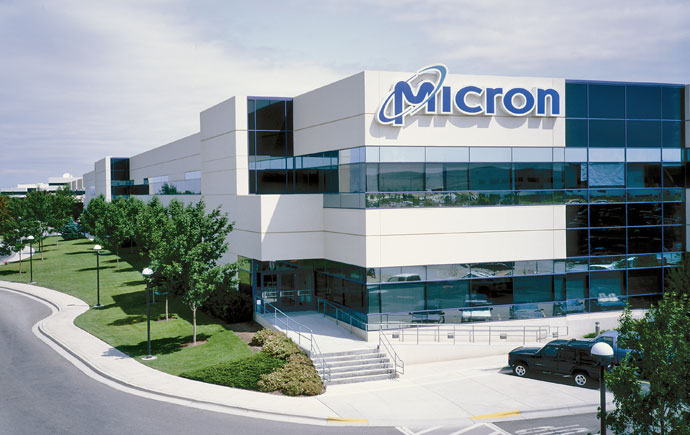Dan Francisco says it’s no secret why rapidly growing high-tech companies enjoy life in the Rocky Mountain West.
“The climate for innovation is here, and you need government support and education in order to grow. We have all of that and more right here,” says the spokesman for Boise, Idaho-based Micron, a global semiconductor developer and manufacturer that employs more than 5,000 workers in Idaho.
Francisco is not alone. According to Palm City, Fla.-based POLICOM Corp., cold-climate communities in the Mountain West rank among the top-performing economies in the U.S., bucking a long-term trend that otherwise sees a flight of corporate investment from northern states to the South.
Salt Lake City ranks second strongest among all 366 metropolitan areas in the country in terms of overall economic performance, says POLICOM founder and president William H. Fruth. Denver ranks ninth.
Among micropolitan areas, the numbers tilt even more toward the Rockies, as five communities in the top 10 are based in that region. Durango, Colo., ranks first; Helena, Mont., ranks second; Gillette, Wyo., ranks third; Bozeman, Mont., ranks seventh; and Edwards, Colo., ranks ninth.
“The top-rated areas have had rapid, consistent growth in both size and quality for an extended period of time,” said Fruth, who specializes in analyzing local and state economies. “The rankings do not reflect the latest hot spot or boomtown, but the areas which have the best economic foundation. While most communities have slowed or declined during this recession, the strongest areas have been able to weather the storm.”
The study measures 23 different economic factors over a 20-year period. According to the data, no region is faring better right now than the Rocky Mountain states.
The POLICOM research is corroborated by an analysis of project data from the Conway New Plant Database, the official corporate facility tracking service of Site Selection. In 2010, the five-state region of Colorado, Idaho, Montana, Utah and Wyoming produced more than US$2 billion in corporate facility expansion projects which generated at least 8,172 new jobs.
These deals included a $500-million R&D facility investment from Spirae Inc. in Fort Collins, Colo., a $100-million turbine manufacturing plant investment from Pavilion Energy Resources in Idaho and a $285-million data center by Oracle in West Jordan in Salt Lake County, Utah.
Montana garnered a $100-million natural gas plant expansion from Williston Basin Interstate Pipeline in Baker, while Wyoming landed a $350-million helium factory from Cimarex Energy Co. in South Piney Creek.
Wyoming has also been on a roll with data centers, securing significant investments from Verizon, GreenHouse Data, EchoStar and the National Center for Atmospheric Research.
In Idaho, the most active sectors last year included semiconductors, energy, outdoor sports equipment and call centers.
Micron has long been a mainstay of the Idaho semiconductor industry. Francisco says that will continue.
“Micron makes memory in Idaho, and has been based in Boise since our founding in 1978,” he says. “Our business has expanded globally in connection with the rest of the semiconductor business, but we have always maintained our headquarters and our global base for research and development right here in Boise. We also make a lot of product in Lehigh, Utah.”
Even though more than 70 percent of the company’s products are sold to customers in Asia, it still makes the most business sense to keep the firm grounded in Idaho, says Francisco.
“There is a reason the company was founded here and still exists here. It has excelled and thrived in Idaho,” he says. “Micron has traditionally always received strong support from the broader business community, and the business environment of Idaho has been conducive to business success. Also, from an employee standpoint, Boise is a great place to live.”
Micron likes the innovative nature of the people of Idaho, Francisco says. “For a long time, Micron has been a leading company in innovation and patent development. Micron has long been a leader in this industry in patents per capita. A lot of that is due to the great minds that are at the company — people who have been innovating for years. Memory is a lot more complex than people think, and the most creative engineers have continued to stay and thrive at Micron.”
Francisco points out that USA Today published a story about five years ago on the top inventors in the U.S., “and three of the top ten were Micron engineers.”
He adds that “the spirit of innovation and entrepreneurship is here, and incubator activity is occurring here as well. The university community has grown a lot too. Boise State University will soon have a Ph.D. program in material science, in partnership with Micron.”
Young people like the area, he notes, because “it has an active outdoor lifestyle. Boise is a unique town. It is now the third biggest city in the Pacific Northwest behind Seattle and Portland.”
Missoula Mill To Be Redeveloped
Among other recent industrial investments in the Rockies, M2 Green Redevelopment LLC, an affiliate of Green Investment Group Inc., in May announced the purchase of a former Smurfit-Stone paper mill in Missoula, Mont., for $20 million.
M2 Green plans to invest an additional $40 million in the 3,200-acre (1,295-hectare) brownfield site on the Clark Fork River in Missoula Valley. The mill closed on Jan. 8, 2010, after operating for 53 years. Prior to closing, the plant employed 400 people.
“The Missoula property offers many opportunities for continued progress in the region,” said Ray Stillwell, principal of Green Investment Group. “As with all of our projects, our main goal is to work with the community and local officials to develop a site that complements the other industries in the area and meets the economic needs and interests of its people by creating jobs in sustainable growth industries.”
